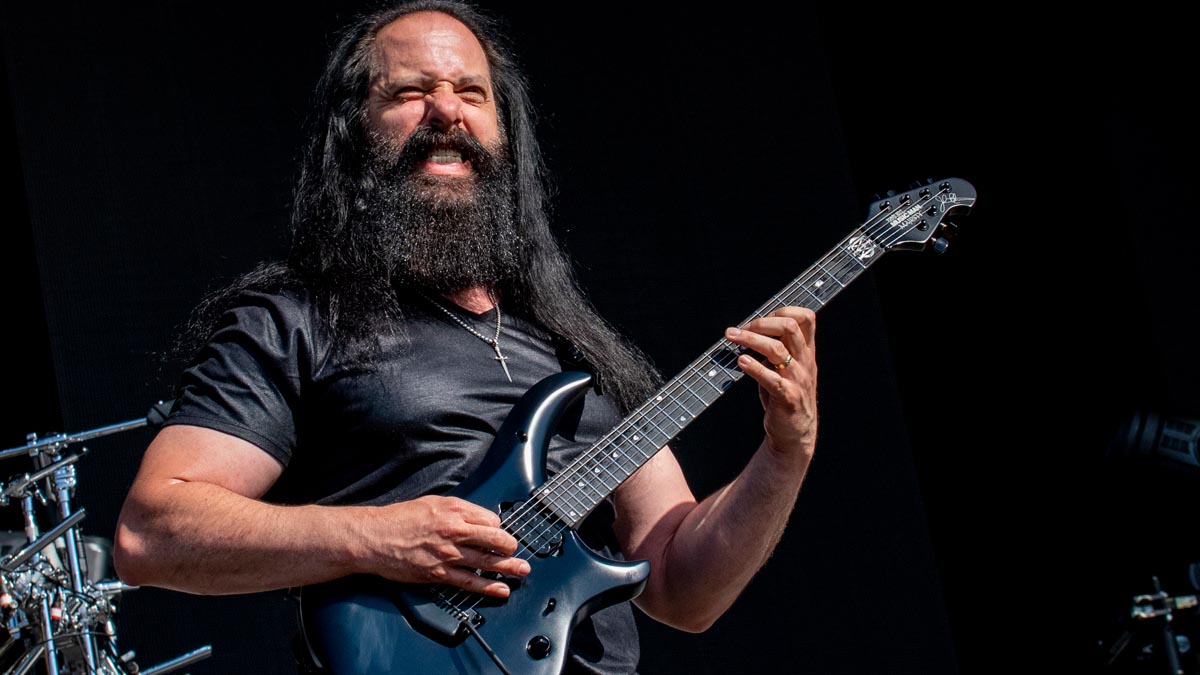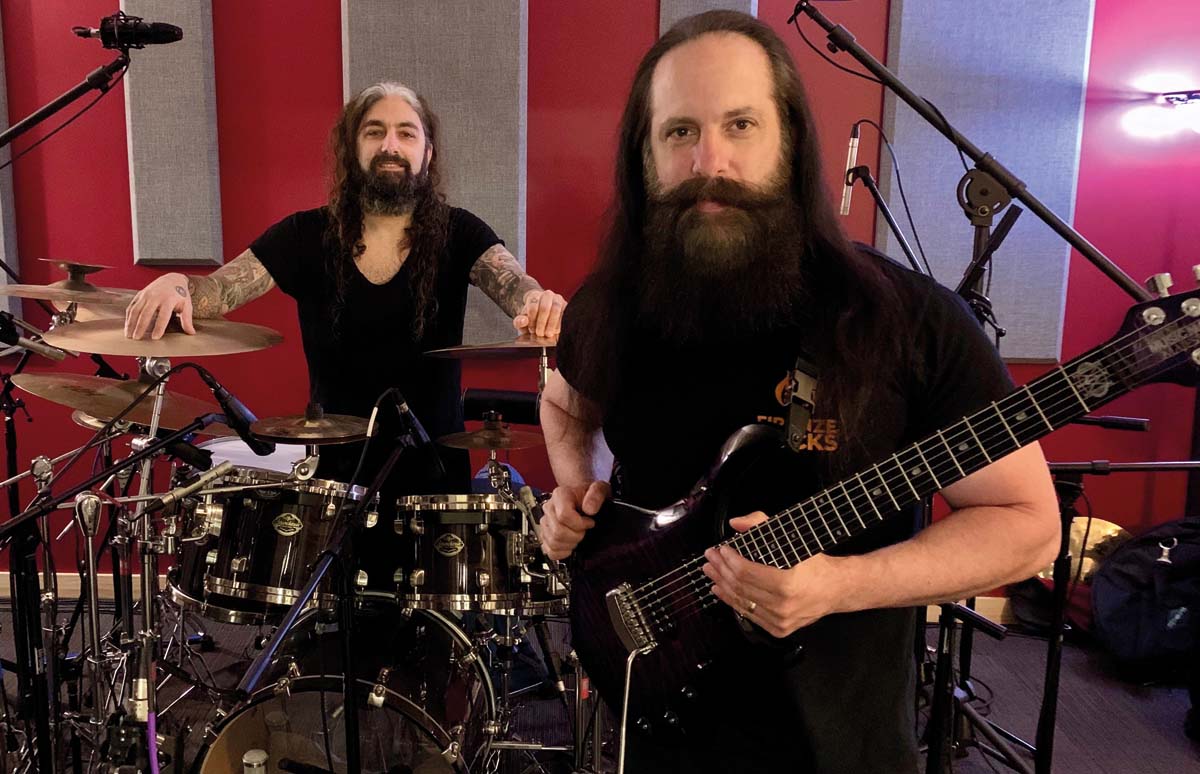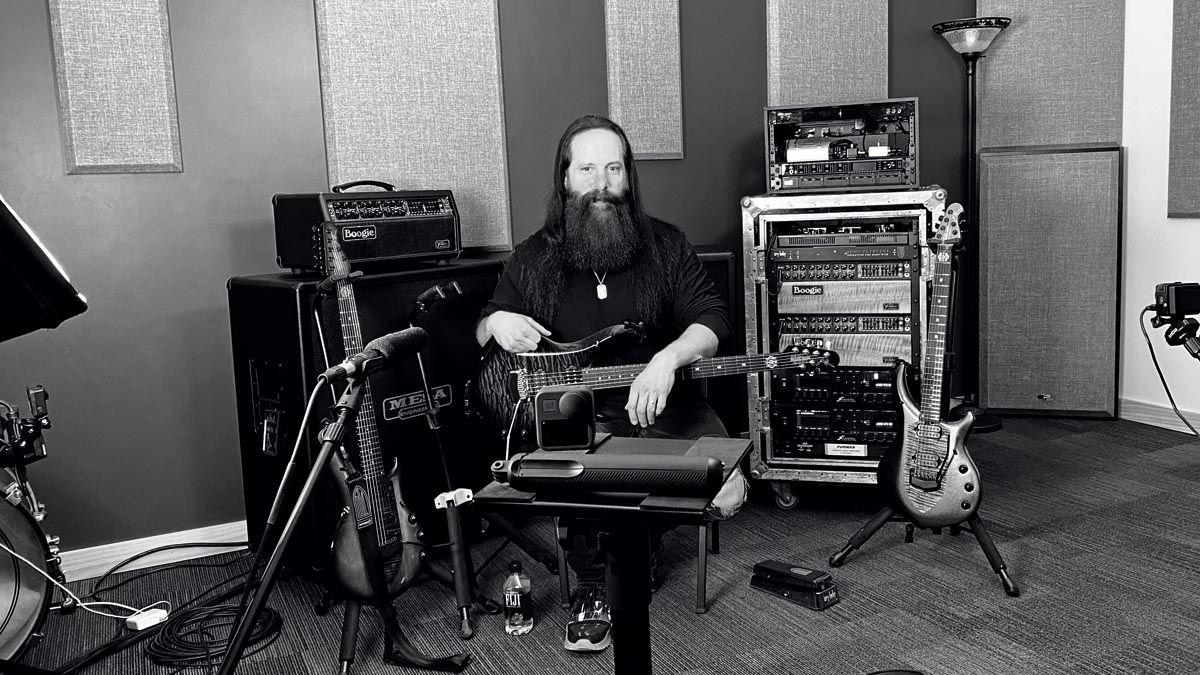John Petrucci: ”The guitar melody takes the place of the vocals. If it was all soloing and noodling, it would get really boring”
The Dream Theater guitarist reflects on his first solo album since 2005 and tells us why it's a record of upbeat energy

In early 2020, when Dream Theater were touring Europe to celebrate both their latest album, Distance Over Time, and the 20th anniversary of 2000’s Scenes from a Memory, John Petrucci had no immediate plans to finish writing his second solo album, which he has worked on sporadically between Dream Theater activity over the past few years.
At the time, there was hardly time to think, let alone put together a schedule for anything that didn’t involve his main gig. The band was scheduled to remain on the road through at least the end of April and then begin discussing the follow-up to Distance Over Time. But then, like every other touring group, Dream Theater were forced to ground operations in late February due to the COVID-19 pandemic.
Not only were the musicians unable to play shows, they couldn’t practice together or work on new material since Petrucci is in Long Island, New York, which, in March, was near ground zero for the Coronavirus and all the band members were adhering to CDC guidelines, wearing masks and socially distancing.
It didn’t help that vocalist James LaBrie was at home in Toronto. And the band didn’t want to work together digitally. Effectively isolated and practically quarantined, Petrucci took the hiatus as an opportunity to return to his home studio and finish Terminal Velocity, his first solo album since 2005’s Suspended Animation.
Like the former, the new release is a melodic and deftly played showcase of virtuosic instrumental songwriting and technical guitar excursions.
The album easily could have reflected Petrucci’s frustration with the infectiousness and danger of the Coronavirus, yet Petrucci treated his time in the studio as an escape from the outside world, a panacea for the disorientation he felt when he stepped back upstairs and turned on the news, and an opportunity to write spirited, exciting songs that offer listeners a diversion from the daily chaos.
I think the turmoil that was going on is buried in the energy of the music, but when I was in the headspace of creating, I just flipped a switch and entered this zone where everything was all about the music
“I think the turmoil that was going on is buried in the energy of the music, but when I was in the headspace of creating, I just flipped a switch and entered this zone where everything was all about the music,” Petrucci says. “So I think the songs are exciting instead of aggressive and it’s really positive for the most part. The last thing I wanted to do was to have my first solo album in 15 years be this negative, doom-and-gloom bummer of a record.”
Get The Pick Newsletter
All the latest guitar news, interviews, lessons, reviews, deals and more, direct to your inbox!
Ensconced in his studio with all of his gear, Petrucci nonetheless kept his setup simple. He played the entire album using his signature Ernie Ball Music Man guitars, including the 2019 Emerald Green Enchanted Forest and the Majesty Purple Nebula equipped with his DiMarzio Rainmaker Neck and Dreamcatcher Bridge pickups.
As much as Petrucci likes seven-strings, he wrote and played just one song, “Temple of Circadia,” on a signature seven-string. Regardless of which guitar he used, he plugged into a JP Mesa/Boogie and a 4x12 Boogie cabinet and Neve preamps.
When it came to songwriting, Petrucci wanted the guitar parts to feature memorable melodic motifs and atmospheric experimentation between the abundant leads. While he was intent on writing songs that would wow crowds at clinics and G3 tours, melody was always at the forefront of his mind.
“I love songs, and songs usually have vocals,” Petrucci says. “So, when I write an instrumental, the guitar melody takes the place of the vocals. They become the cohesive structures that separate the verses, choruses and bridges and soloing. If the songs didn’t have that melodic focus and structure, and it was just all soloing and all noodling, it would get really boring.”
I love songs, and songs usually have vocals. So, when I write an instrumental, the guitar melody takes the place of the vocals
While Petrucci is proud of Terminal Velocity, which ranges from the blues swagger of Out of the Blue to the frantic guitar sprint of the title track, he’s aware that Dream Theater fans – even those who enjoy the music – will likely view it as a placeholder until the next Dream Theater album.
And that’s fine with him. With no hesitation he explains that he’d rather have remained on the road with Dream Theater and kept Terminal Velocity on hold until he had small windows between band tours and writing sessions to get to work on the project.
“People ask me why it took 15 years for me to make another solo album,” he says. “The answer is because I never had the time to devote to fully getting it done. To be honest, it wasn’t necessarily a pressing thing for me, so I worked on it gradually over time. But I’m really happy with it and I’m glad I did it.” Petrucci’s 2005 solo album also stemmed more from pragmatism than divine inspiration.
In 2001, the guitarist was invited to join Joe Satriani’s G3 tour. Petrucci was thrilled with the offer, but he lacked original instrumental material to play onstage. So he quickly wrote a batch of songs and debuted them on the tour.
“I played the songs I wrote and did a Dream Theater instrumental, and that gave me enough for a 45-minute set,” he says. “It was only after I did that when I decided to complete an album’s worth of solo material and get that out – but that was really an afterthought.”
Mike banged out all his parts in six days, which is amazing since there are a lot of weird tempo changes and crazy arpeggios on there as well as a lot of different musical styles
He took a similar approach for Terminal Velocity. Four out of the nine songs – Gemini, Happy Song, Glassy-Eyed Zombies and The Way Things Fall – were originally written for 2007 G3 with Satriani and Paul Gilbert.
Petrucci also played the material at guitar clinics over the years and at the John Petrucci Guitar Universe Camp, which he launched in 2018. The oldest track on the new solo album, Gemini, is from a nearly forgotten demo of a song he first played at clinics in the early '90s.
“I also used a little bit of Gemini on my [2002] instructional video Rock Discipline,” he says. “And I played it live for a while so people might recognize it from a YouTube homemade video.” Glassy Eyed Zombie and Happy Song also can be tracked down on social media in rough form. The Way Things Fall, however, was composed for G3 but didn’t make the cut and has never been played live.

“I forgot about that song for a while,” Petrucci says. “Then when I was gathering my thoughts for this record, I found a fully demoed version of it and I thought it was really cool. I don’t know why I never played it before now.”
To record the older songs, Petrucci replayed them along with a newly programmed drum track. Then he added bass. Instead of retracking guitars for the final tracks, Petrucci pasted his guide parts directly into the songs without any overdubs.
For the remaining five songs on Terminal Velocity, Petrucci took a deep dive into his invaluable riff bank, which contains rhythms, arpeggios and lead fragments he has recorded over the decades on audio and digital home recorders, answering machines and cellphone voice boxes.
In the past, he has raided the bank for Dream Theater, yet he found it especially useful for Terminal Velocity. Using what he calls “song seeds” to start the songs, Petrucci worked with his engineer, James “Jimmy T” Meslin, who programmed beats that further inspired the guitarist’s creativity.
“We did a passage at a time and then moved onto the next one,” Petrucci says. “Doing it that way is a lot of fun because you’re working with all these parts, but you don’t really know where the song is going. So everything just develops along the way.”
The icing on the cake came when ex-Dream Theater drummer Mike Portnoy – who hadn’t been on a record with Petrucci since 2010 – came in and recorded directly over Petrucci’s final complex guitar parts. That flipped the script on standard band operating procedure, in which the drummer records either to a click or over scratch tracks before the guitarist lays down his final rhythms. Portnoy was certainly more than up for the task.
“It was an interesting way to work,” Petrucci says. “I had never done anything like that before, but with the pandemic going on, we had to be resourceful. Mike banged out all his parts in six days, which is amazing since there are a lot of weird tempo changes and crazy arpeggios on there as well as a lot of different musical styles. And his playing is so lively and spirited and he played with so much energy. The whole experience was great.”
Dream Theater fans hopeful that Petrucci and Portnoy’s collaboration could lay the groundwork for the drummer’s return to the band will likely be disappointed. As much as Petrucci enjoyed working with Portnoy on Terminal Velocity, the drummer will not return to Dream Theater; Mike Mangini remains the man behind the kit.

“I know people tend to speculate, but it’s something we never even discussed,” Petrucci says. “I wanted to have Mike [Portnoy] on there just to have a great drummer on my solo album, so why not?” he says, emphasizing that he and Portnoy have maintained a good relationship over the years.
“Even though Mike left the band, we’ve always kept in touch and our families have been friends forever. Our wives played in a band together and our kids grew up together so we’ll always be family – just not bandmates.”
Ironically, while the COVID-19 pandemic enabled Petrucci to create the long-awaited followup to Suspended Animation, the virus has virtually ensured he won’t be able to promote the album on the road even after musicians start touring again.
“I’m really glad these songs are out there,” he says. “For now, that’s gotta be enough because the way things are right now, Dream Theater are pushing up our plans to enter the studio. We’ll start on a new record later in the fall. And then, the first opportunity we get, we’ll be back on tour again.”
- Terminal Velocity is out now via Sound Mind Music.
Jon is an author, journalist, and podcaster who recently wrote and hosted the first 12-episode season of the acclaimed Backstaged: The Devil in Metal, an exclusive from Diversion Podcasts/iHeart. He is also the primary author of the popular Louder Than Hell: The Definitive Oral History of Metal and the sole author of Raising Hell: Backstage Tales From the Lives of Metal Legends. In addition, he co-wrote I'm the Man: The Story of That Guy From Anthrax (with Scott Ian), Ministry: The Lost Gospels According to Al Jourgensen (with Al Jourgensen), and My Riot: Agnostic Front, Grit, Guts & Glory (with Roger Miret). Wiederhorn has worked on staff as an associate editor for Rolling Stone, Executive Editor of Guitar Magazine, and senior writer for MTV News. His work has also appeared in Spin, Entertainment Weekly, Yahoo.com, Revolver, Inked, Loudwire.com and other publications and websites.
“Even the thought that Clapton might have seen a few seconds of my video feels surreal. But I’m truly honored”: Eric Clapton names Japanese neo-soul guitarist as one to watch
“You better be ready to prove it’s something you can do”: Giacomo Turra got exposed – but real guitar virtuosos are being wrongly accused of fakery, too











